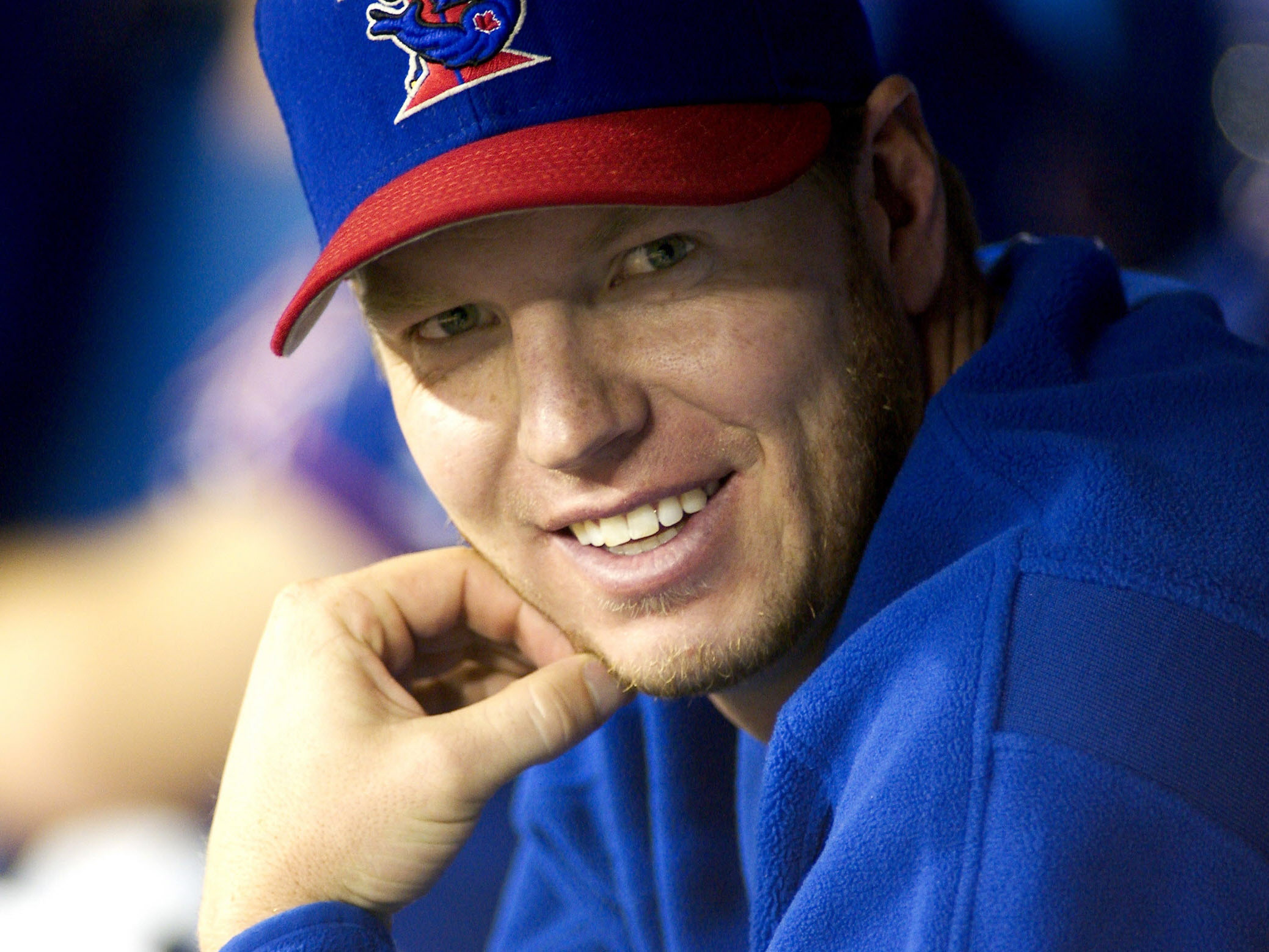Godspeed to Roy Halladay, a throwback starter, beloved star and unforgettable Blue Jay

TORONTO — When the Rogers Centre has been thrumming and shaking in recent years, when the stadium has been packed with fans reacquainting themselves with the terrors of playoff baseball, and the soaring highs, crashing lows and one majestically flipped bat, the thought would come to mind: man, Roy Halladay would have absolutely loved this.
Halladay, who died at just 40 years old on Tuesday when the plane he was piloting crashed into the Gulf of Mexico, was for many years one of the very few bright spots on the Toronto Blue Jays. Over a 10-season stretch that formed the heart of his Blue Jays career, the team never finished within 10 games of the division lead. It finished second just once, and, obviously, never made the playoffs. In his last season in Toronto blue, the Jays finished 28 games back in the division. Halladay would end his time here with back-to-back complete game shutouts.
That was just what he did. There are all kinds of numbers to put Halladay’s career in perspective, but none of them really do justice to the memory of him on the mound. He was relentless, inexorable, a just-give-him-the-damn-ball starting pitcher in the twilight of the era in which teams wanted those types of pitchers. He was a throwback, and one of the very last of them.
Would he have thrown his very best if his Jays teams were of the more recent vintage, bashing homers and muscling themselves into the playoffs for the first time in forever? Man, he would have loved it.
And for all of his many accomplishments — the two Cy Young awards, the eight All-Star teams, the fact he led his league in complete games seven times, the no-hitters and the perfect game — one number that defines him more than anything is this one: 10.64.
Halladay was 23 years old and he had lost it. A first-round draft pick who had arrived in the major leagues like a thunderbolt two years earlier, coming within one out of a no-hitter in just his second career start, Halladay finished the 2000 season with an earned-run average of 10.64. It was the worst season for a major-league pitcher in recorded history, and baseball records a lot of history. Halladay was sent all the way to Dunedin, home of the Class-A team, where he had pitched as a teenager, to find his delivery. And find himself, really.
An athlete who loses his game so completely rarely gets it back. His assignment was the type given to players who have blown out their elbows, who have to learn to pitch again because their bodies have been broken. Halladay was fine. He just couldn’t get anyone out.
Blue Jays management would say that they had faith he would recover his form, but they would also, privately, have recognized that, from all that promise, he might already be done.
Two seasons later, Halladay led the American League in innings pitched. He did the same a year later, winning 22 games for Toronto and his first Cy Young award, while throwing 266 innings. No one has thrown that many in the 14 seasons since. It is an exceedingly safe bet that no one ever will again.
Halladay’s earned-run average in that 2003 season was 3.25. One could comb through an awful lot of record books in an awful lot of sports and not find a more extreme example of an athlete who rescued his career from the depths in quite such a triumphant — and quick — fashion.
From there, Halladay would become Halladay. The Doc — rarely has a ballplayer’s nickname seemed more appropriate, as this one evoked an old-timey feeling that perfectly matched his performance — would pile up starts and innings and starts and innings over the rest of his career. He missed some time due to injury in the two seasons following his 2003 breakout, but would give Toronto five more great seasons, and when he was traded to the Philadelphia Phillies after the 2009 for three prospects, there was nothing to do but wish him the best.
What was the point of watching him waste more of those metronome-like starts in Toronto, where the team couldn’t even manage games that mattered in September, let alone October? We tend to revile athletes who leave town for better things. No one booed a departing Halladay. Godspeed, Doc. You did your part.
He never did make that World Series, though not for lack of trying on his part. Halladay’s first playoff game after 2,193 regular-season innings would have been tossed from a Hollywood script for being a little too unbelievable: a no-hitter against the Reds, just the second in post-season history. If you didn’t find joy in that, sports fans, then there is no point in watching the games.
Halladay was always a reason to watch. He was many things: husband and father, by all accounts a genuinely good guy. He retired a Blue Jay, and should one day have the team’s cap on his Hall of Fame plaque.
But to me, he was the guy who saved his career when few imagined he could, and went on to be the unforgettable pitching machine on a succession of forgettable teams. Those teams that revived baseball in this city, this country? They were a Roy Halladay away from getting back to the World Series.
Godspeed, Doc.
• Email: sstinson@postmedia.com | Twitter: @scott_stinson





